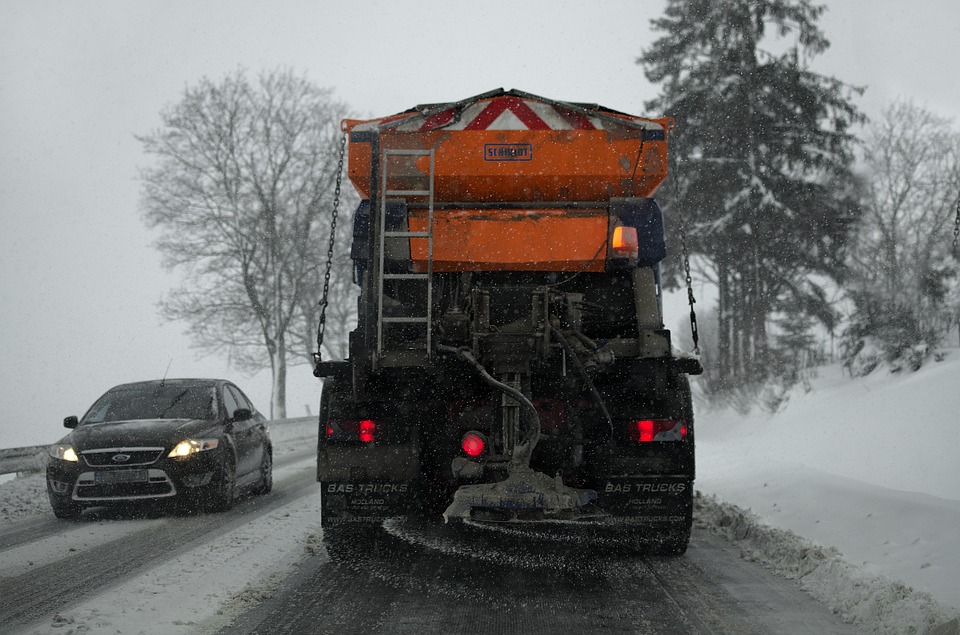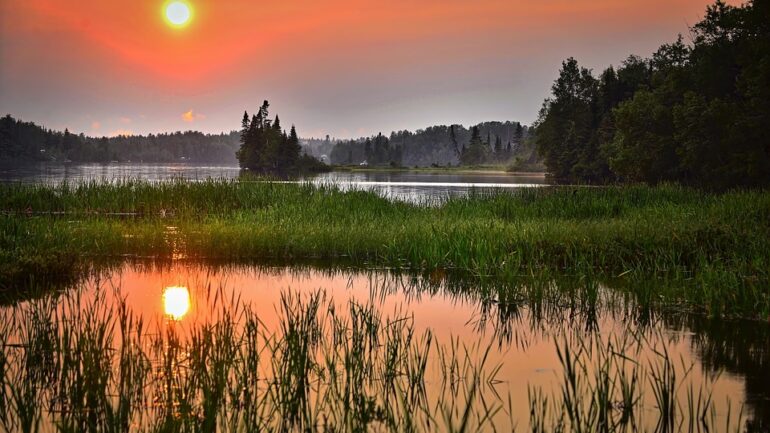By Seren Nurgun, Staff Writer for Save The Water™ | December 13, 2015
Road Salt In The Winter
During the winter months, communities brace themselves for the unwavering harsh conditions of high winds, heavy snow, and below freezing temperatures. The greater these winter conditions are, the greater duration of time that drivers must avoid the roads due to high snow and ice. Without the quick, easy use of roads, local economies slump due to a significant lack of travel and people are forced to remain largely indoors. In order to combat this fate, cities utilize the most common element that we shake onto our foods: salt, otherwise known as sodium chloride.
Essentially, salt mixed with water causes ice to melt because a salt-water solution has a lower freezing point than pure water. “When added to ice, salt first dissolves in the film of liquid water that is always present on the surface, thereby lowering its freezing point below the ice’s temperature. Ice in contact with salty water, therefore, melts, creating more liquid water, which dissolves more salt, thereby causing more ice to melt, and so on.”6 Applying salt to snow-covered roadways speeds up the melting process, thus allowing cars to travel that much sooner. This process greatly benefits ease of travel and is highly preferred and utilized. According to the American Highway Users Alliance, a trade advocacy group in Washington, D.C, “road salt pays for itself within 25 minutes of being applied, reducing crashes by up to 88 percent, injuries by up to 85 percent and accident costs by up to 85 percent.”1
However, due to the relatively low cost of this process and its “quick fix” capabilities, many cities across the U.S. implement this method in large scales and quantities. It’s estimated that more than 22 million tons of salt are scattered on the roads of the U.S. annually.8 After fulfilling their initial purpose, all of these tons of salt end up getting “carried away and deposited into both surface water (streams, lakes, and rivers) and the groundwater under our feet.”8
Effect of Snow Salt on Chloride Concentrations
A study conducted by the U.S. Geological Survey and the Wisconsin State Laboratory of Hygiene found that chloride concentrations exceeded U.S. Environmental Protection Agency water-quality criteria at 55 percent and 25 percent of the 168 monitoring locations in northern metropolitan areas from November to April. Only 16 percent (chronic) and 1 percent (acute) of sites exceeded criteria from May to October. At southern sites, very few samples exceeded chronic water-quality criteria, and no samples exceeded acute criteria.3 The findings of this study demonstrate the direct result of the high use of road salt during the winter months. Runoff containing high levels of road salt lead to high levels of chloride in the surrounding bodies of water.
Dramatically increased levels of chloride in the water can negatively impact ecosystems. “Elevated chloride can inhibit plant growth, impair reproduction, and reduce the diversity of organisms in streams.”5 The most sensitive terrestrial species to salt are birds through the consumption of salt crystals. Other wildlife species are affected by drinking water with concentrations of chloride greater than 600 mg/L Damage to vegetation can also have an impact on wildlife habitat by destroying food resources, shelter and breeding and nesting sites.7
Because these increased levels of sodium chloride can also make their way through runoff into groundwater where drinking water is sourced, there is also a risk to humans drinking unfiltered tap water. “For drinking water, EPA now requires monitoring and has set a drinking water limit of 20 mg/L for sodium above which public water systems must report the concentration to local health authorities (USEPA, 2003a). Such reporting allows physicians to advise any of their patients on sodium-restricted diets accordingly. Excess sodium, linked with hypertension, which is high blood pressure identified as greater than 140/90, has driven EPA’s limit. This condition is of concern because, if left untreated, it can lead to cardiac disease, renal disease, hardening of the arteries, eye damage, and stroke. Approximately 25% of the adult US population has hypertension (Makoff and Marks, 2004). 6
Read more on desalination technology here: Hold the Salt: The Future of Desalination Technology
The Solution to the Salt Problem
In order to avoid these possible harmful effects, many local city governments across the United States have been trying and employing alternative methods of keeping the roads safe aside from simply using pure salt. For example, the government of Polk County, Wisconsin has been utilizing cheese brine. According to their findings, because dry salt bounces initially when it’s applied, mixing the brine in with salt saves 30 percent of salt by eliminating the bounce factor, so [they] can use less salt to get the same effect. 2 Not only does this mean that they save thousands of dollars, but it also means that they contribute a great deal of less salt in the environment, benefiting their local ecosystem as well as human population.
Another alternate technique used by officials in Des Plaines, Illinois, a city of 58,000, “uses a mixture of beet juice and calcium chloride to wet streets before snow or ice strike.” 2 This method reduces the amount of salt needed for the desired effect by pre-wetting the roads, which helps break the bond between snow and road. Various other techniques include a mixture of 20 percent beet juice and 80 percent liquid salt brine as well as a mixture of calcium chloride, sugar cane molasses, and regular road salt.4
Although it requires extra effort to investigate alternate options for reducing snow and ice on roadways, the outcomes of doing so are overwhelmingly positive. Local governments can lessen both the damage to their ecosystems and the potential harm to residents unknowingly drinking high levels sodium, saving thousands of dollars in the process.
References
- Balakrishnan, Anita. “Road Salt: Winter’s $2.3 Billion Game Changer – NBC News.” NBC News. 19 Feb. 2015. Retrieved from http://nbcnews.to/1JrROSf
- Copeland, Larry. “Communities Seek a Substitute for Road Salt.” USA Today. Gannett, 23 Feb. 2013. Retrieved from https://www.usatoday.com/story/news/nation/2013/02/23/road-salt-substitute/1939793/
- Corsi, Steven R., David J. Graczyk, Steven W. Geis, Nathaniel L. Booth, and Kevin D. Richards. “A Fresh Look at Road Salt: Aquatic Toxicity and Water-Quality Impacts on Local, Regional, and National Scales.” Environmental Science & Technology 44.19 (2010): 7376-382. Print. Retrieved from http://pubs.acs.org/doi/pdf/10.1021/es101333u
- Long, Emily. “More (Or Less) Road Salt.” Conservation Law Foundation. Conservation Law Foundation RSS, 25 Jan. 2011.
- Mullaney, John, and Diane Noserale. “Chloride Found at Levels That Can Harm Aquatic Life in Urban Streams of the Northern U.S.–Winter Deicing a Major Source.” USGS Newsroom. U.S. Department of the Interior — U.S. Geological Survey, 16 Sept. 2009. Retrieved from https://www.usgs.gov/news?ID=2307&from=#.VlpoFXjHKKx
- Pelton, Arthur. “Why Do We Put Salt on Icy Sidewalks in the Winter?”Scientific American Global RSS. 26 Dec. 2005. Retrieved from https://www.scientificamerican.com/article/why-do-we-put-salt-on-icy/
- Siegel, Lori. “Hazard Identification for Human and Ecological Effects of Sodium Chloride Road Salt.” (2007). State of New Hampshire. Retrieved from http://www.rebuildingi93.com/documents/environmental/Chloride%20TMDL%20Toxicological%20Evaluation.pdf
- Stromberg, Joseph. “What Happens to All the Salt We Dump On the Roads?”Smithsonian. 6 Jan. 2014. Retrieved from http://bit.ly/1Fo6y1I





